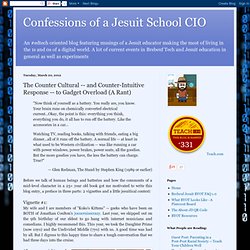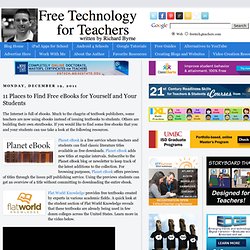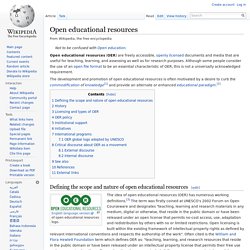

Using this Site. Hear that hissing sound? It’s the textbook bubble deflating. I’ve written frequently about the unsustainable “college textbook bubble,” which continues to inflate at rates that make the U.S. housing bubble seem relatively inconsequential by comparison, see chart above.

The cost of college textbooks has been rising at almost twice the rate of general CPI inflation for at least the last thirty years. As Glenn Reynolds reminds us, “a process that cannot go on forever, won’t,” and the college textbook bubble is certainly one of those processes. In this post from last April, I predicted that the traditional, cartel-style textbook model won’t survive, and we might already be hearing the giant hissing sound of the “college textbook bubble” starting to deflate due to lower cost competition from alternative textbook providers like Flat World Knowledge.
HTML5 Document Embedding. And Counter-Intuitive Response. "Now think of yourself as a battery.

You really are, you know. Your brain runs on chemically converted electrical current...Okay, the point is this: everything you think, everything you do, it all has to run off the battery. Like the accessories in a car... Watching TV, reading books, talking with friends, eating a big dinner...all of it runs off the battery. A normal life -- at least in what used to be Western civilization -- was like running a car with power windows, power brakes, power seats, all the goodies.
'Banning Is Not the Answer' to Mobile and Social Tools in Schools. Mobile Computing | News 'Banning Is Not the Answer' to Mobile and Social Tools in Schools Before choosing to restrict the use of social and mobile tools in schools, policymakers and education leaders have to consider the negative impact such restrictions will have on learning.
That's the premise of a new policy report released jointly this week by more than a dozen prominent education associations and advocacy groups. The goal of the report, its authors argued, was not to prescribe specific policies but to illuminate issues that need to be considered--both positive and negative--in order to help bring policy in line with the needs of education and realities of technological world in which students live. Infographic - What do High School Students want from mobile tech. ASCD (Association for Curriculum and Development) has taken statistics from a variety of sources and coalates it into a nice infographic about students, mobile learning, learning methods and what high school students want in mobile learning. The research shows that banning mobile devices in school does not work and that schools should be embracing these devices and helping students use them for learning.
Some of the stats: 63 percent of students attending schools carry their mobile devices despite the rules (probably conservative)63 percent of students want online textbooks with communication facilities;40 percent want online texts with collaboration tools.43 percent stated social media is one of the main ways they communicate with friends online.62 percent of student use the Internet as a new source; whereas 17 percent use it to gain knowledge concerning topics generally difficult to talk about — such as drug use. I am one of those teachers who hastes the rule banning these devices. 11 Places to Find Free eBooks for Yourself and Your Students. The Internet is full of ebooks.

Much to the chagrin of textbook publishers, some teachers are now using ebooks instead of issuing textbooks to students. Others are building their own etextbooks. If you would like to find some free ebooks that you and your students can use take a look at the following resources. Planet eBook is a free service where teachers and students can find classic literature titles available as free downloads. Planet eBook adds new titles at regular intervals. Flat World Knowledge provides free textbooks created by experts in various academic fields. E-Books Directory contains more than 6000 titles.
Flat World Knowledge. 7 Myths About BYOD Debunked. BYOD | Viewpoint 7 Myths About BYOD Debunked Lisa Nielsen, the author of "Teaching Generation Text: Using Cell Phones to Enhance Learning" and "The Innovative Educator" blog, believes it is time to shatter a few myths about students bringing their own devices (BYOD) to school.

By Lisa Nielsen11/09/11 More than a decade into the 21st century and we are still keeping learners and teachers prisoners of the analog past by enforcing outdated mandates that ban and block them from using the digital resources of their world. Fortunately, today’s students are standing up, speaking out, and, in many cases, using the technology and websites they do not have access to in school to do so. Myth No. 1: BYOD deepens the digital divide. Myth No. 2: BYOD will result in lessons geared toward the weakest device. 7 Myths About BYOD Debunked. E-Textbooks: 4 Keys to Going All-Digital. Back to School: Rethinking the Textbook. Image by anselm23 via Flickr Over the past few years I have been meeting with a steady stream of entrepreneurs who are determined to reshape the textbook business.
While some of these new ventures are in the area of K-12 publishing (these tend to be the more ambitious schemes), most have targeted the market for higher education textbooks. This is not surprising, as many of these individuals are themselves recent college graduates. Open educational resources. Open educational resources (OER) are freely accessible, openly licensed documents and media that are useful for teaching, learning, and assessing as well as for research purposes.

Although some people consider the use of an open file format to be an essential characteristic of OER, this is not a universally acknowledged requirement. The development and promotion of open educational resources is often motivated by a desire to curb the commodification of knowledge[1] and provide an alternate or enhanced educational paradigm.[2] Defining the scope and nature of open educational resources[edit] The above definitions expose some of the tensions that exist with OER: At the same time, these definitions also share some universal commonalities, namely they all: cover both use and reuse, repurposing, and modification of the resources;include free use for educational purposes by teachers and learnersencompass all types of digital media.[10] History[edit] BYOT (Bring Your Own Technology) 12/29/2009 By: by Ellen Ullmann Each spring, Walled Lake (MI) Consolidated School District kicks off its ten-year-old Anytime Anywhere Learning (AAL) Laptop Program with an orientation meeting for parents of fifth graders.

At the meeting, parents learn about the 1:1 laptop program, in which students use their computers to learn about everything from databases to digital storytelling to video creation. What makes this 1:1 program unique, however, is that students are encouraged to buy their own laptops. How It WorksThe district laptop - available through a local reseller - includes extra RAM, an extended battery, a three-year accident-protection plan, a loaner laptop (if necessary), Microsoft Office Professional, and a three-year subscription to anti-virus protection. Families can buy from another vendor as long as the laptop meets the district’s specifications and they understand that they are responsible for handling any problems.